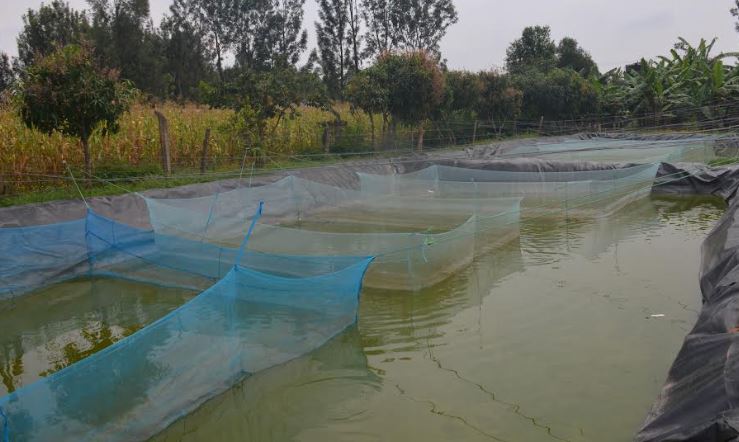Migori County has registered continuous growth in fish production after a partnership with the Aquaculture Business Development Programme (ABDP).
The county, boasting a stretch of 523.32 square kilometres of Lake Victoria water surface, has previously been producing fish below its capacity, with major fishing activities being undertaken within the lake.
The interventions of the ABDP in 2019 saw a robust increase in fish capacity from the introduction of inland fish farming.
ABDP introduced inland fish farming through the establishment and rehabilitation of fish ponds, inland cage farming, and dams, leading to the appreciated production.
According to County Director of Fisheries Ms. Judith Okinda, the intervention resulted in a 22.8 metric tonnes harvest of fish in mid-2023, up from 18.2 metric tonnes in 2019.
The newly adopted technologies, such as fish pond liners, predicate kits and nets, installation of solar power, cold rooms, and improved fingerlings and feeds, increased fish production to 45 metric tonnes as of June 2024 valued at 36 million.
Okinda explains that the Aquaculture Business Development Programme has supplemented what the County Government crafted to do to improve fish production.
In 2023, ABDP managed to construct 21 new fish ponds, distribute 150,000 mono-sex fingerlings to farmers, and stocked three dams to promote fish farming culture.
The partnership has so far supported 1,346 active fish farmers in the county by equipping them with skills and fishing equipment that include pond liners, fingerlings, and fish feeds to enhance and develop aquaculture in the county.
The introduction of cold room facilities, commonly referred to as ‘Smart Kiosks’ at Isebania and Uriri urban markets, will further increase fish production in the county as well as reduce post-harvest losses.
The official said that the county has ensured that the sustainability of the projects initiated by ABDP is maintained through the support of local hatcheries in Sori Karungu, Awendo, and Rongo.
Initially, fish farmers in Migori had to rely on fingerlings from hatcheries in Homabay and Kisumu, that were quite expensive in transportation costs, added Okinda.
Simon Karoki, the County Fisheries Officer, disclosed that since the inception of the ABDP programme, they have managed to rehabilitate 700 ponds and helped to construct 400 new ponds for farmers.
Karoki, who doubles-up as the County programme coordinator for ABDP, notes that they will soon focus on community fish cages to boost the fish production in Lake Victoria for Nyatike residents.
“We also want to supplement what the traditional fish farmers in the lake are doing by introducing fish cage farming in Lake Victoria. As they go to fish in their traditional system, fish in cages will be growing, giving them a double income every four months,” noted Karoki.
ABDP is currently working in 29 wards where 97 pond liners, 409,000 fingerlings, and 87 tonnes of fish feed have been provided to aquaculture farmers not only to improve the fish production in the county but also to improve the community livelihoods, market linkages, improved health nutrients, and increase food security.
Karoki emphasised that by increasing fish production in the country, job creation among the youth will be sustained, adding that the programme has created aquaculture support activities within the fish industry.
The fish transport sector, fish trade, and fish marketing are some of the value chain additions that have empowered the local youths in addressing unemployment in the County.
Migori County Chief Officer for Fisheries and Blue Economy, George Ochola, underscores that the increase in fish production and consumption can be attributed to the changing behaviour of fish-eating culture, especially among the Kuria community.
The community is slowly embracing the fish-eating culture through the introduction of various fish ponds in the region.
Ochola added that the depth of Lake Victoria in Migori is considered the best in terms of a fish caging system that will further increase the fish production in Lake Victoria.
“The challenge of traditional fish farmers within the lake is that they do not want to wait for seven months to harvest. They want to go into the water and catch fish every day,” explained Ochola.
The County official, however, disclosed that through the partnership with ABDP, they will continue to sensitise the community on new modern technologies and training programmes to empower the fishing community.
By Geoffrey Makokha and George




